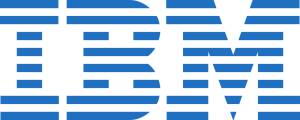Cloud vs. Edge: Where Should AI Training Really Happen?
Artificial Intelligence (AI) is no longer a futuristic experiment—it’s the backbone of automation, analytics, personalization, and innovation across nearly every industry. From financial institutions detecting fraud in milliseconds to healthcare providers delivering AI-assisted diagnoses, the demand for AI-driven applications is accelerating at an unprecedented pace.But as AI adoption grows, one critical infrastructure question looms large:Should AI training and inference live in the cloud, at the edge, or in a hybrid model that combines both?The short answer:it depends—on latency requirements, cost structures, data gravity, regulatory considerations, and the overall AI lifecycle. The right choice isn’t a simple binary.In this expanded guide, we’ll take a deep dive into:The AI lifecycle and how infrastructure impacts each stageThe benefits and challenges of cloud-based AI trainingWhy edge AI is gaining ground for real-time applicationsHow hybrid cloud-edge strategies are becoming the industry standardReal-world use cases that highlight the decision-making processA practical framework for choosing between cloud, edge, or bothUnderstanding the AI Lifecycle: Training vs. InferenceBefore decidingwhereAI should run, it’s important to understandwhatAI is doing. The AI lifecycle consists primarily of two phases:trainingandinference. Each has very different infrastructure needs.TrainingTraining is the process of teaching an AI model how to make decisions. It involves:Processing massive datasets—often petabytes in sizeRunning on high-performance GPUs or TPUsfor days or weeksHandling complex mathematical operationsin parallelStoring and accessing vast amounts of datarepeatedlyExample: Training a large language model (LLM) like GPT or a computer vision model for autonomous driving.Training is computationally expensive, storage-intensive, and requires a stable, high-bandwidth connection between data and processing hardware.InferenceInference is the phase where a trained model is deployed to make predictions in real time. This could mean:Recognizing a face on a security camera feedRecommending a product to an e-commerce customerTranslating speech on a mobile devicePredicting when a factory machine will failUnlike training, inference typically prioritizeslow latency,availability, andproximity to the end userover sheer compute power.The fundamental takeaway:training is heavy-duty and benefits from centralized, scalable resources, while inference is time-sensitive and often benefits from being closer to the user or device.Cloud for AI Training: The Standard ModelFor the past decade, cloud computing has been the go-to infrastructure for AI training—and for good reason. Leading cloud providers like AWS, Microsoft Azure, and Google Cloud Platform have invested billions into building AI-ready infrastructure.Benefits of Cloud AI Training1. Scale on DemandCloud platforms allow teams to instantly spin up thousands of GPUs or TPUs, enabling large-scale parallel processing. What could take months on a limited on-premise cluster can be completed in a fraction of the time in the cloud.2. High-Performance ComputeCloud providers offer specialized AI hardware such as NVIDIA A100 GPUs, Google TPUs, and AMD Instinct accelerators, optimized for matrix operations and deep learning workloads.3. Data CentralizationMany organizations already store their training datasets in cloud object storage like Amazon S3, Azure Blob Storage, or Google Cloud Storage. Training in the same environment minimizes data transfer costs and speeds up access.4. Flexibility for ExperimentationThe ability to provision and de-provision resources on demand makes it easy to test different architectures, tuning parameters, and preprocessing pipelines without waiting for hardware to become available.Challenges of Cloud AI Training1. Cost Over TimeWhile pay-as-you-go sounds appealing, large-scale model training can quickly rack up six- or seven-figure bills, especially for projects that require repeated retraining.2. Vendor Lock-InUsing proprietary AI services (e.g., Vertex AI, SageMaker) can make it challenging to switch providers without rewriting pipelines and retraining models.3. Latency for Distributed TeamsData scientists spread across geographies may experience delays accessing GPUs or datasets if the cloud region is far from their location.Edge AI: Inference and BeyondEdge computingbrings data processing closer to where data is generated—whether on IoT devices, industrial gateways, autonomous vehicles, or local micro data centers. For AI, edge computing is most often associated withinferencerather than training.When to Choose Edge AI1. Real-Time ResponsivenessApplications like autonomous driving, robotics, augmented reality (AR), and virtual reality (VR) require sub-10ms latency. Sending data to the cloud and back can take too long.2. Bandwidth ConstraintsIn remote environments with limited or expensive internet connectivity—such as rural farms, oil rigs, or ships at sea—it’s far more efficient to process data locally.3. Data Privacy and ComplianceRegulated industries like healthcare, finance, and government may be prohibited from sending sensitive raw data to public cloud environments.4. Offline AIEdge devices can run inference even without a network connection, ensuring continuous operation in unstable network conditions.Key Advantages of Edge AIMinimal Latency— Processing happens on-site, avoiding cloud round-trip delays.Reduced Cloud Costs— Less data needs to be transferred or stored in the cloud.Privacy-Preserving— Sensitive data can be processed and discarded locally without ever leaving the device.Operational Resilience— AI continues to function even in complete network outages.Hybrid Approaches: Training in the Cloud, Inference at the EdgeIncreasingly, organizations are adoptinghybrid AI strategiesthat combine cloud and edge:Train in the cloudusing large-scale compute resources.Optimize and compress models(quantization, pruning) for deployment.Deploy to edge devicesfor low-latency inference.Send back selected datafrom the edge to the cloud for retraining.This model offers:The power of the cloudfor resource-heavy training.The speed of the edgefor end-user-facing predictions.Cost efficiencyby reducing unnecessary data transfer.Hybrid Use Case ExamplesSmart Factories— AI predicts equipment failures using edge-deployed models trained on cloud infrastructure.Retail Kiosks— AI personalizes offers in-store with instant on-device inference, while training happens in the cloud.Voice Assistants— On-device wake-word detection paired with cloud-based NLP model training.Real-World Example: AI in Smart AgricultureA precision agriculture company uses drones, soil sensors, and weather data to optimize crop yields:Cloud Training— Billions of data points from past seasons, satellite imagery, and IoT sensors are processed in the cloud to train a crop prediction model.Edge Inference— Lightweight versions of the model run on field-deployed devices, giving real-time irrigation and fertilization recommendations without requiring internet access.Continuous Improvement— Data from the field is selectively synced back to the cloud to refine the model each season.This hybrid approach delivers real-time decision-making while keeping costs and connectivity requirements low.Decision Framework: Cloud vs. Edge for AIThe Future of AI Infrastructure: Flexible and IntegratedIn 2025 and beyond,AI infrastructure will not be one-size-fits-all. While the cloud remains the backbone of large-scale training, the edge is where AI meets the real world—powering instant decisions, offline capabilities, and compliance-friendly deployments.The winning strategy will beflexible, hybrid, and integrated, connecting cloud and edge through:APIs and orchestration layersCI/CD pipelines for ML modelsOver-the-air (OTA) updatesfor edge devicesFederated learningfor privacy-preserving model improvementOrganizations that master this balance will gain a competitive advantage—not just in AI performance, but in agility, scalability, and customer experience.
























